Not a food blog, but here we are, Ecuador edition part 3.
Ecuador’s traditional dishes and the stories I brought home with me!
Last summer, I spent three months in Ecuador, visiting and getting to know my now wife’s family. I have already written an article reflecting on my experience and thinking about the similarities and differences between Ecuador and Europe; this time, I want to focus on a specific topic.
I don’t usually write about food here, but Ecuador deserves an exception, and here is what I ate, what I loved, and what didn’t quite win me over. As a foodie who loves trying new things, I really enjoyed Ecuadorian cuisine. Earlier, I talked about its key ingredients and street food; now, let’s dive into the main dishes.
Beyond the world of street food, Ecuadorian cuisine shines with its traditional dishes: heartily cooked, home-style meals that vary by region but share a love for bold flavours and local ingredients. From the mountains to the coast, you’ll find recipes passed down through generations, often served with rice, potatoes, or plantains. Dishes like hornado (slow-roasted pork), guatita (a tripe stew with peanut sauce), seco de pollo (chicken stew), and encebollado (a fish and onion soup) are just a few examples of how Ecuadorians transform simple ingredients into comforting, flavorful meals. Eating these dishes felt like being invited to someone’s home, warm, filling, and full of tradition.
An Ecuadorian meal is typically well-balanced, featuring simple yet flavorful ingredients. Most meals start with a soup, thick and filling, often made with potatoes, grains, or meat, followed by a main dish that includes rice, a protein (like chicken, beef, or fish), and a side of salad, lentils, or plantains. In many homes and local eateries, lunch is the main meal of the day, and it’s usually generous in portions. There’s a strong sense of comfort and routine in the way meals are served, no fancy presentation, just real, satisfying food meant to be enjoyed with others.
Seco de pollo
Seco de pollo is a classic Ecuadorian stew made with chicken simmered in a rich, flavorful sauce, usually with onions, garlic, peppers, and a hint of beer or naranjilla juice to give it a slight tang. It’s typically served with rice, avocado, and fried plantains, making it a full, comforting meal. The meat is tender, the sauce is deep and savoury, and it’s one of those dishes that feels like home cooking at its best.
Encebollado
Encebollado is a traditional fish soup, especially popular in the coastal regions. Made with fresh tuna, yuca (cassava), onions, tomatoes, and spices, it's a hearty and flavorful dish. The name encebollado comes from the generous topping of pickled red onions (cebolla means onion in Spanish), which gives the soup its signature tang. It's typically served with sides like plantain chips, popcorn, or bread, and many people enjoy it with a squeeze of lime and a touch of hot ají sauce.
It is probably my favourite Ecuadorian dish. This warm, comforting fish soup is packed with flavour and perfect at any time of day.
Ceviche
Ecuadorian ceviche is a refreshing and tangy seafood dish that stands out from other Latin American versions. Unlike the Peruvian style, Ecuadorian ceviche typically features shrimp, fish, or a mix of seafood that is lightly cooked before being marinated in a citrus-based sauce with tomato, red onion, cilantro, and sometimes orange juice. It's served chilled, often as a starter or light meal, and accompanied by crunchy sides like chifles (thin plantain chips), patacones (fried green plantains), or popcorn.
Bolon
Bolón is a beloved dish, particularly popular in the coastal and highland regions of the country. It is made by mashing green plantains that are fried or boiled, and then mixed with a variety of savoury fillings, such as cheese, pork, or sometimes even chicken. The mixture is shaped into a ball and fried until golden and crispy on the outside, while remaining soft and flavorful on the inside. Often served with coffee, bolón is a hearty breakfast or snack that perfectly combines the sweet and savoury flavours of plantain with rich, salty ingredients. It’s a true taste of Ecuadorian comfort food.
Patacones
Patacones are a popular snack made from green plantains, known for their crispy texture and rich flavour. To make patacones, green plantains are sliced, fried until golden, then flattened and fried again to achieve a crunchy, satisfying bite. They are typically served as a side dish or snack and are often accompanied by a tangy dipping sauce, such as ají (spicy sauce), or used as a topping for dishes like encebollado or ceviche. Patacones are loved for their versatility and are a perfect complement to many Ecuadorian meals, offering a delightful contrast to the softness of other ingredients.
Guatita
Guatita is a hearty and flavorful dish made from beef tripe (the stomach lining of a cow), cooked in a rich, spiced peanut sauce. The tripe is simmered with onions, garlic, potatoes, and a blend of spices, creating a savoury, slightly creamy sauce. The dish is often served with white rice and sometimes with avocado and a boiled egg on the side. Guatita is known for its unique taste and is often enjoyed as a warm, filling meal, particularly on colder days.
Even though tripa mishqui wasn’t my thing, I was surprised by how much I liked guatita. The peanut sauce is rich and flavorful, and the whole dish just works; it is full of taste.
Cuy
Cuy (guinea pig) is a delicacy, particularly popular in the highland regions. It has been a part of Andean cuisine for centuries, valued for its tender meat and rich flavour. The guinea pig is typically roasted, seasoned with garlic, cumin, and other spices, and served with sides like potatoes, mote (hominy corn), and ají (spicy sauce). While it may be unfamiliar to some, cuy is considered a delicacy and is often enjoyed during special occasions, celebrations, and traditional feasts. It has a distinct, slightly gamey flavour and is considered a cultural symbol in many Andean communities.
I had cuy a couple of times, and to my surprise, I found it pretty good, even if the idea of it might take some getting used to.
Hornado
Hornado is a quintessential Ecuadorian dish, especially popular in the highland regions. It consists of slow-roasted pork, typically marinated with a mixture of garlic, cumin, and other spices, then cooked until the meat is tender and the skin becomes beautifully crispy. The pork is usually served with mote (hominy corn), Llapingacho (mashed potato patties), and a side of tangy ají (spicy sauce). Often enjoyed during family gatherings and festivals, hornado is a comforting and flavorful dish that showcases Ecuador's love for rich, savoury meats and bold, aromatic flavours.
I ate hornado at Mercado La Merced in Riobamba, surrounded by the hustle of the market and the calls of the señoras serving generous plates of slow-roasted pork. It was a full-on flavour experience; you can read about it here.
Crabs
Cangrejos (crabs) are a coastal delicacy, especially popular in the province of Guayas. They’re typically cooked in a flavorful broth made with garlic, cumin, beer, and fresh herbs, then served whole with sides like green plantains (patacones) or rice. Eating cangrejos is a hands-on, messy, and fun experience, often enjoyed with friends or family during special gatherings. It’s not just a meal, but a social ritual, full of rich flavours and coastal vibes.
One Sunday, my father-in-law decided to cook crabs, and we ended up having a big family lunch around the table. It was messy, fun, and delicious, everyone cracking shells, dipping in sauces. A simple meal that turned into a special moment.
Quimbolitos
Quimbolitos are traditional Ecuadorian steamed cakes made from a light batter of corn flour, eggs, butter, sugar, and cheese, often flavoured with raisins or a hint of citrus. The mixture is wrapped in achira or banana leaves and then steamed, resulting in a soft, moist, and slightly sweet treat. They’re commonly enjoyed with coffee or hot chocolate, especially during special occasions and holidays. Quimbolitos are a delicious example of Ecuador’s blend of indigenous and colonial culinary traditions.
I had the best quimbolito of my life in Jima, while visiting a friend. His mom made it fresh, and it was unbelievably soft, moist, and just sweet enough. Best Breakfast ever!
Pan de yuca
Pan de yuca is a small, cheesy bread made from yuca (cassava) flour and cheese, popular as a snack or breakfast item. Crispy on the outside and soft and chewy inside, it’s often enjoyed warm, paired perfectly with a cold glass of yogur de mora (blackberry yoghurt). Naturally gluten-free and irresistibly tasty, pan de yuca is a favourite in bakeries and cafes across the country.
These are some of the traditional dishes I tried in Ecuador. I mostly visited the Andean and Amazon regions, so I still have many dishes to try and places to visit. Have you tried any of the dishes mentioned in this post? I would love to hear your experiences. Did you like this series about food? Would you like to read more about this topic?
See you soon
Flavio




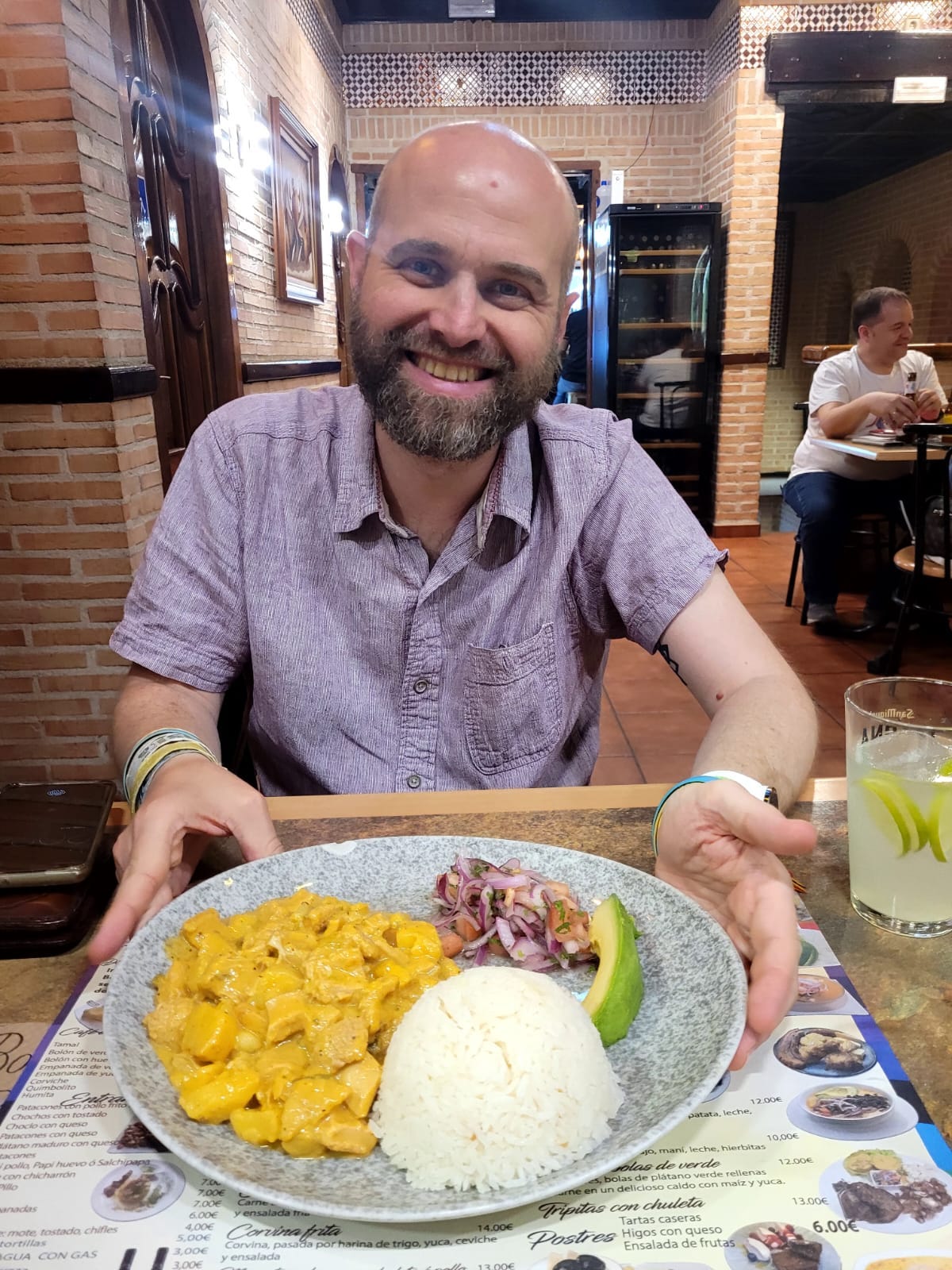


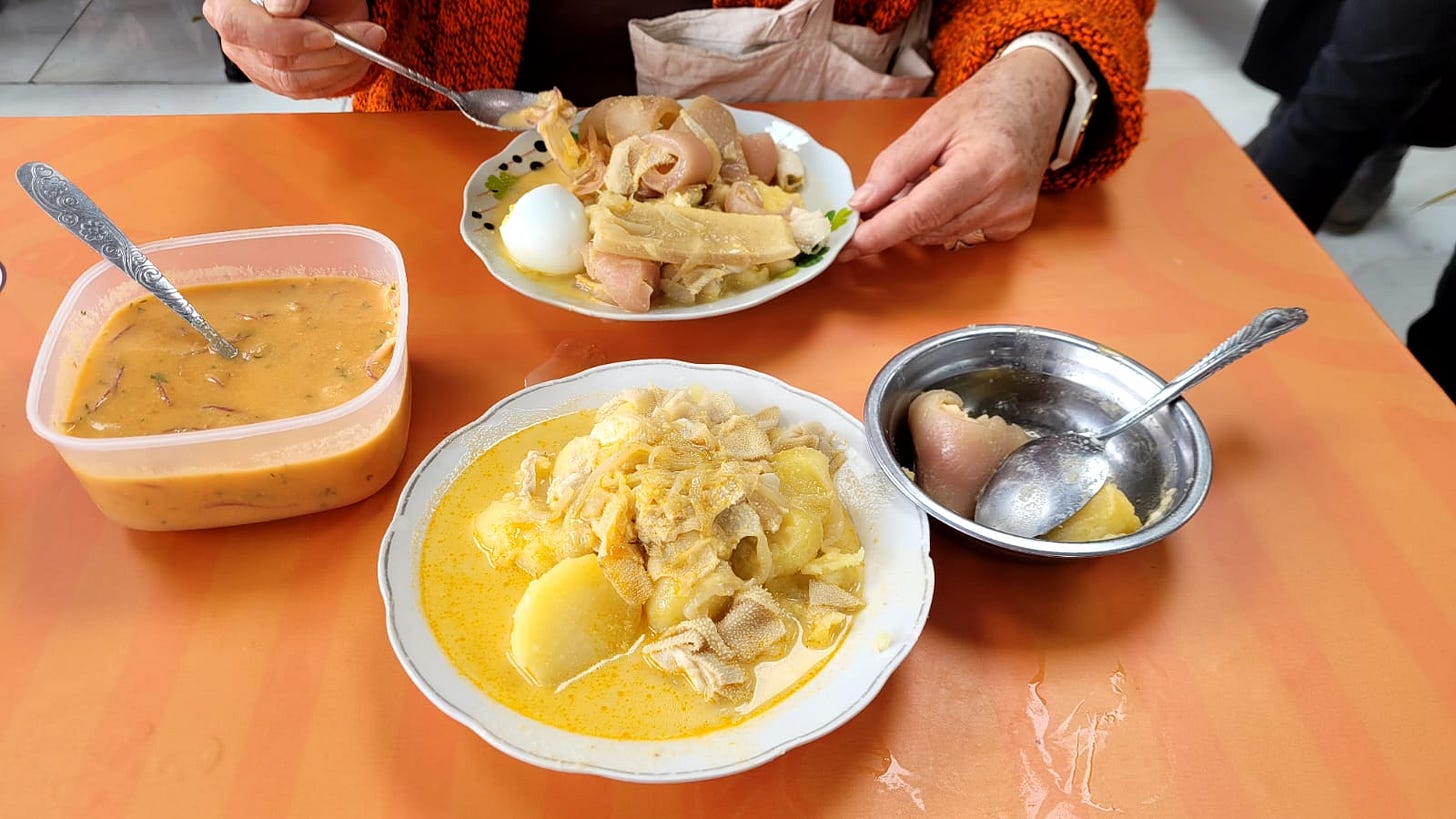
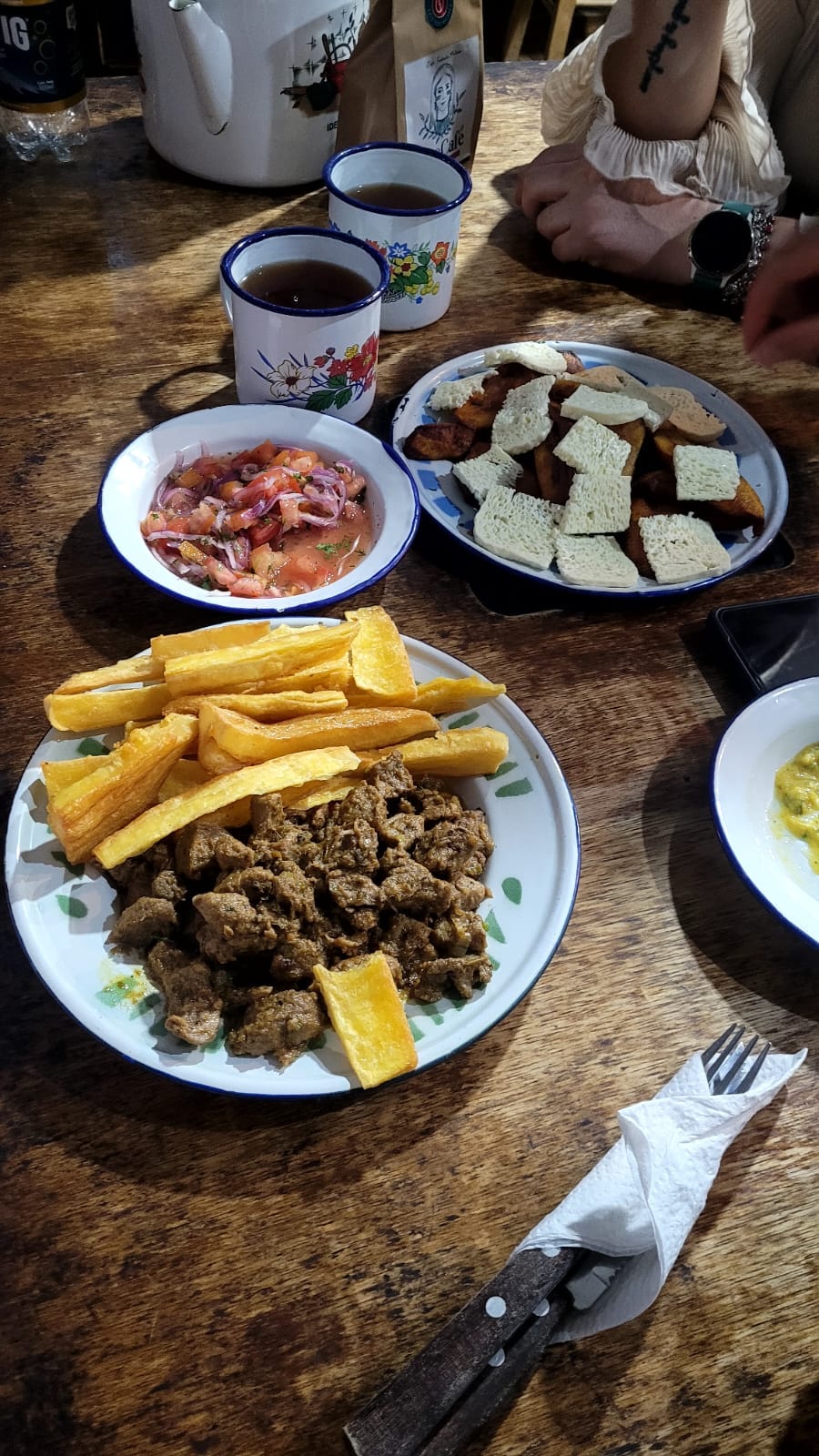
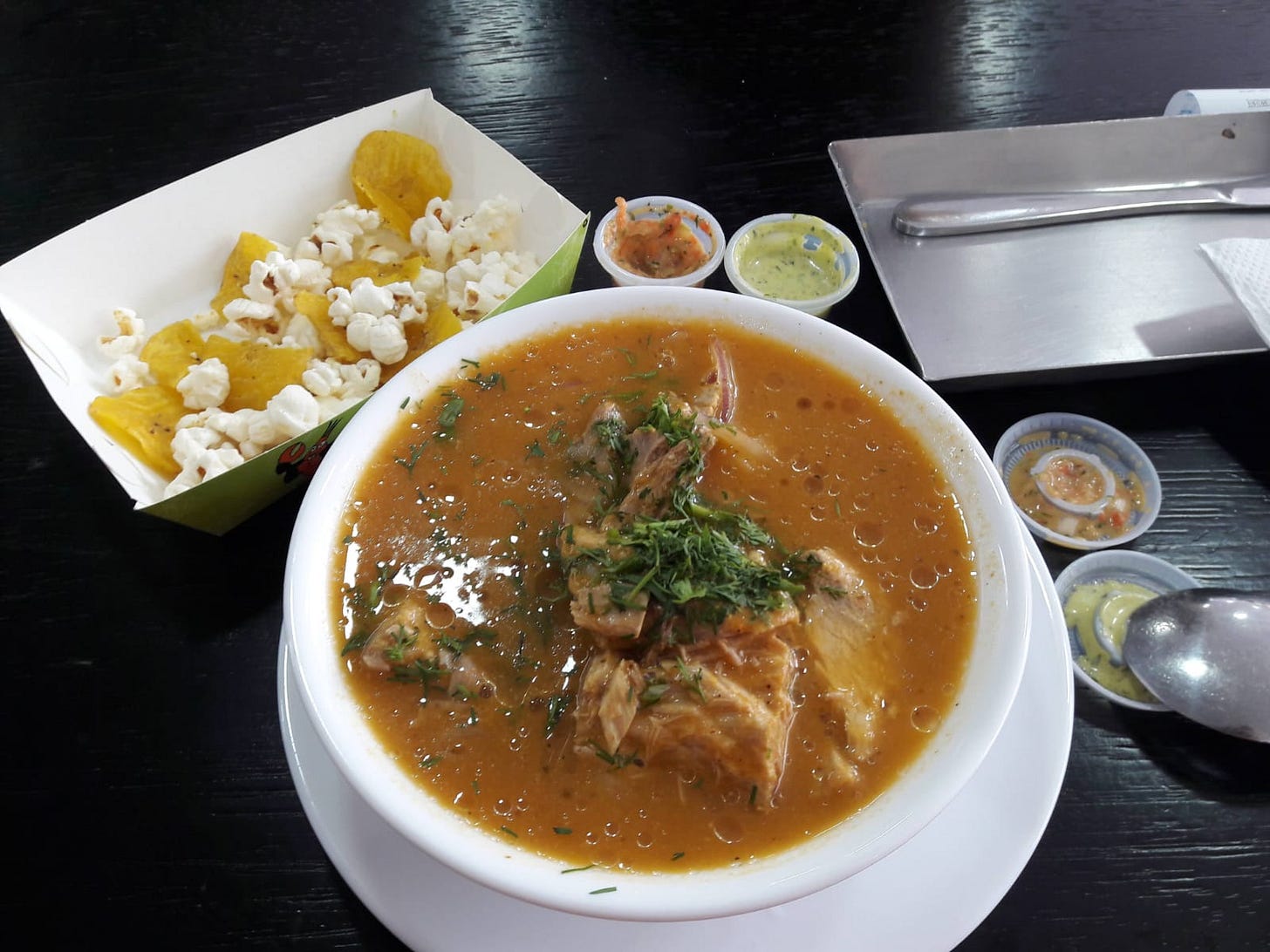



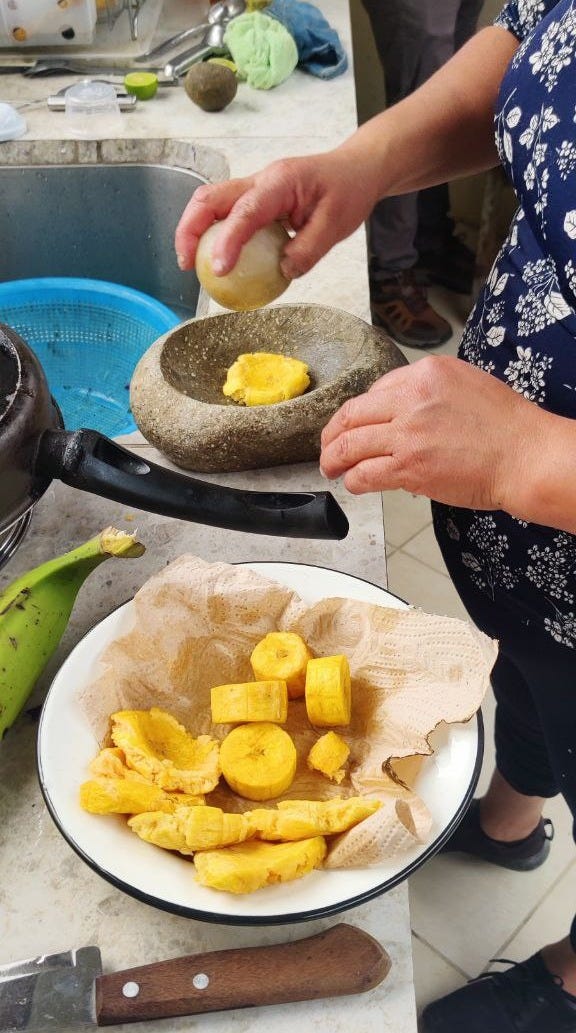

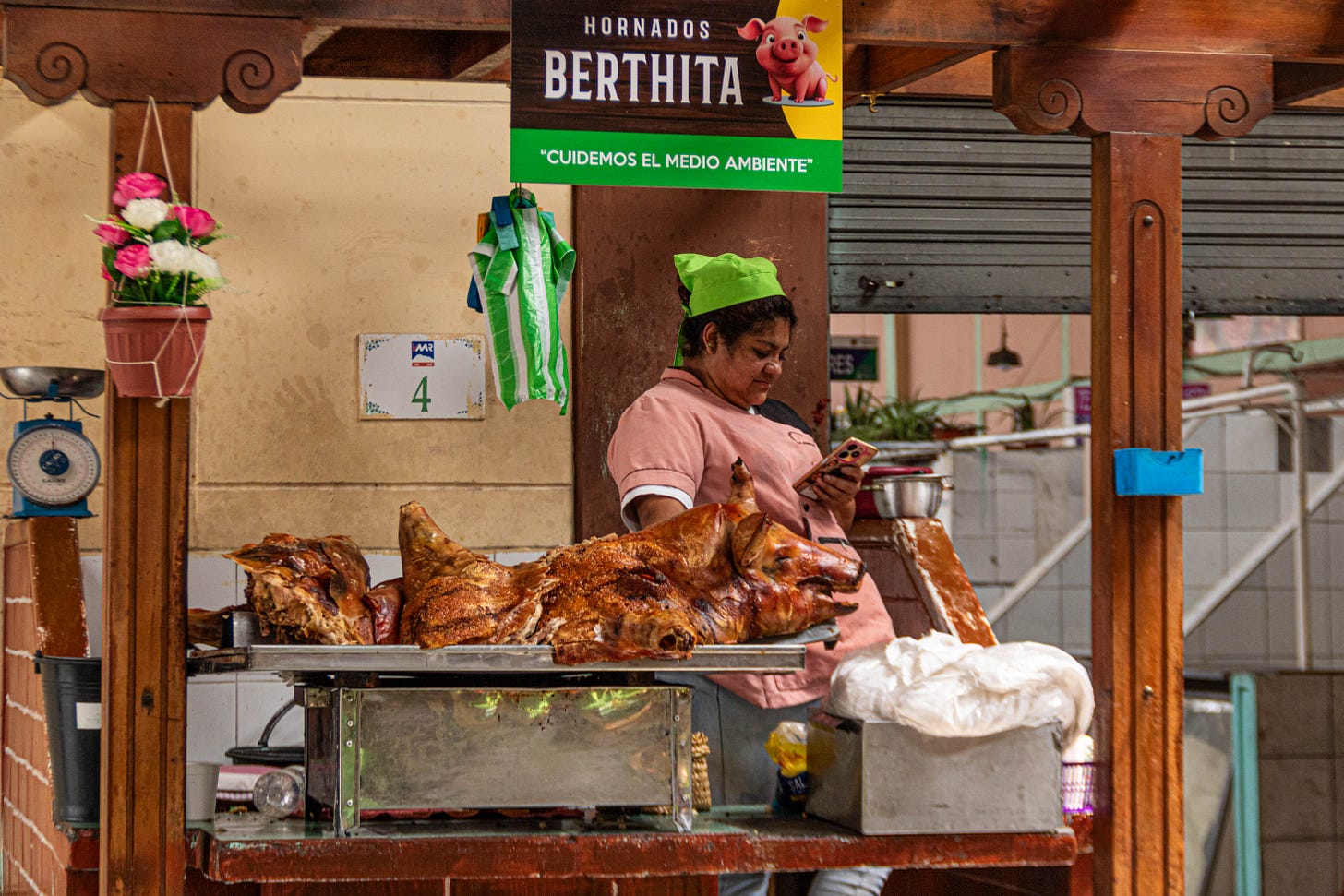
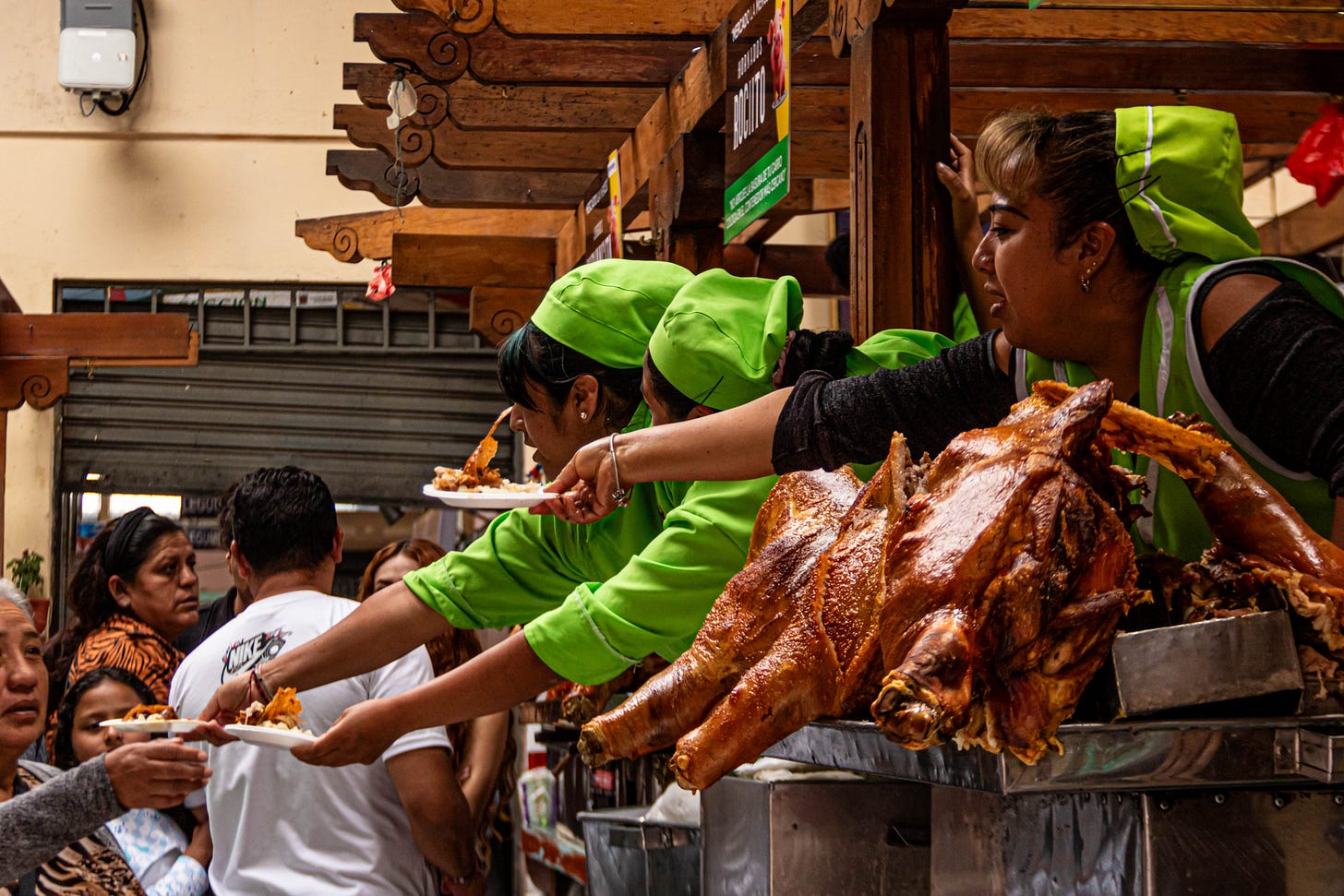
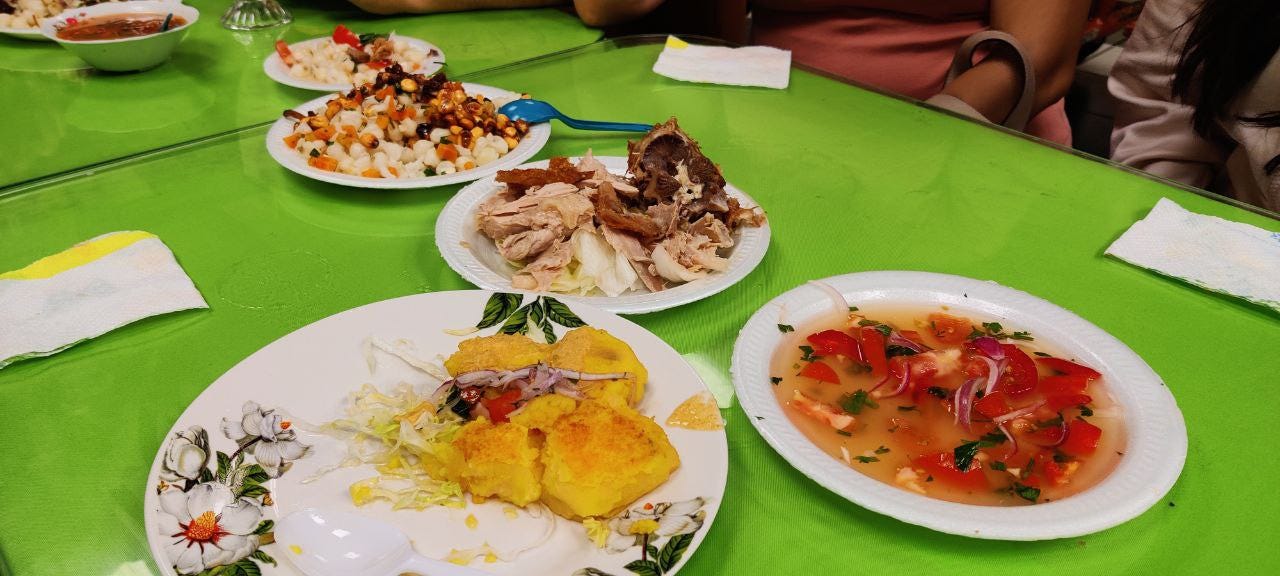
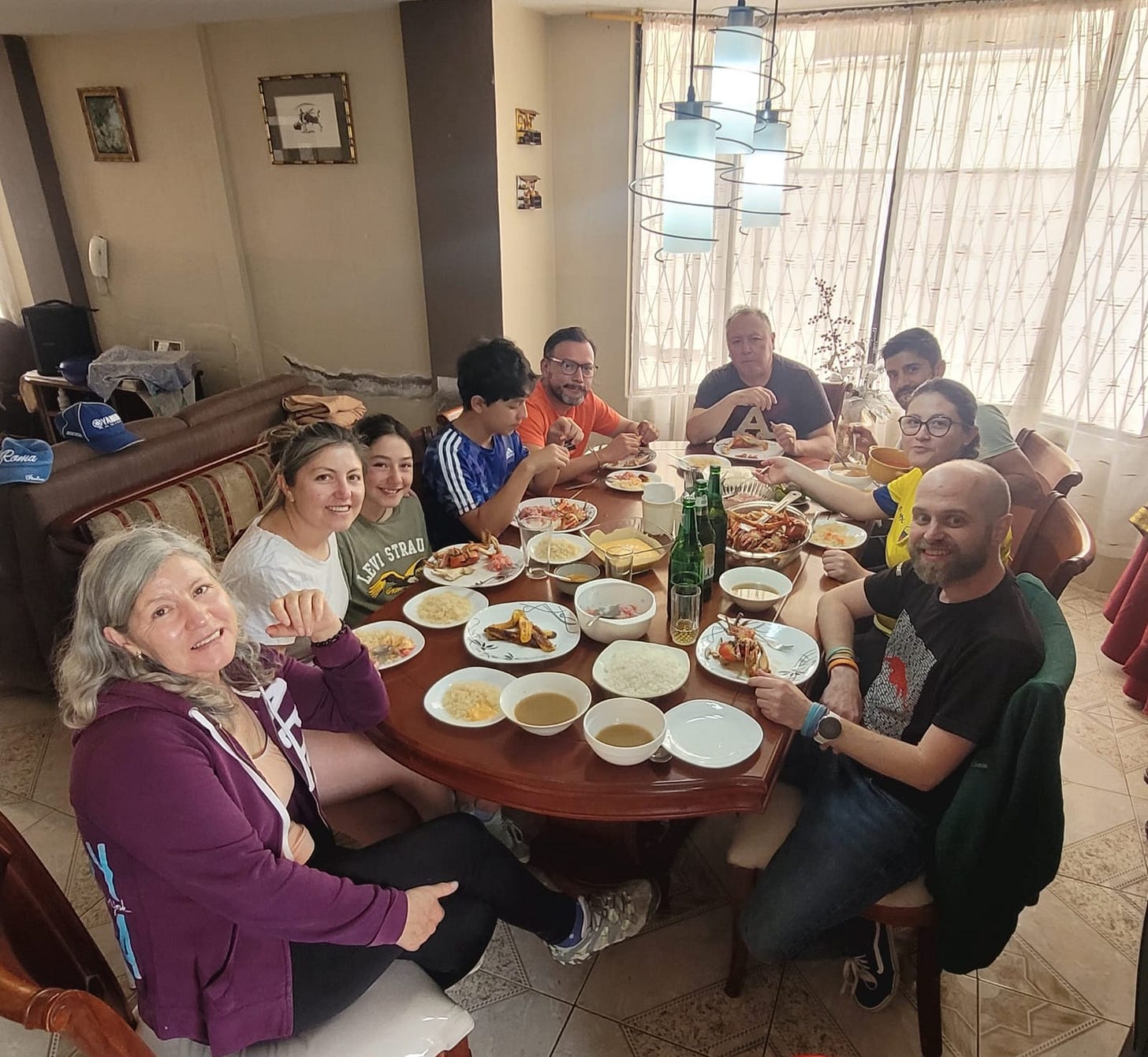

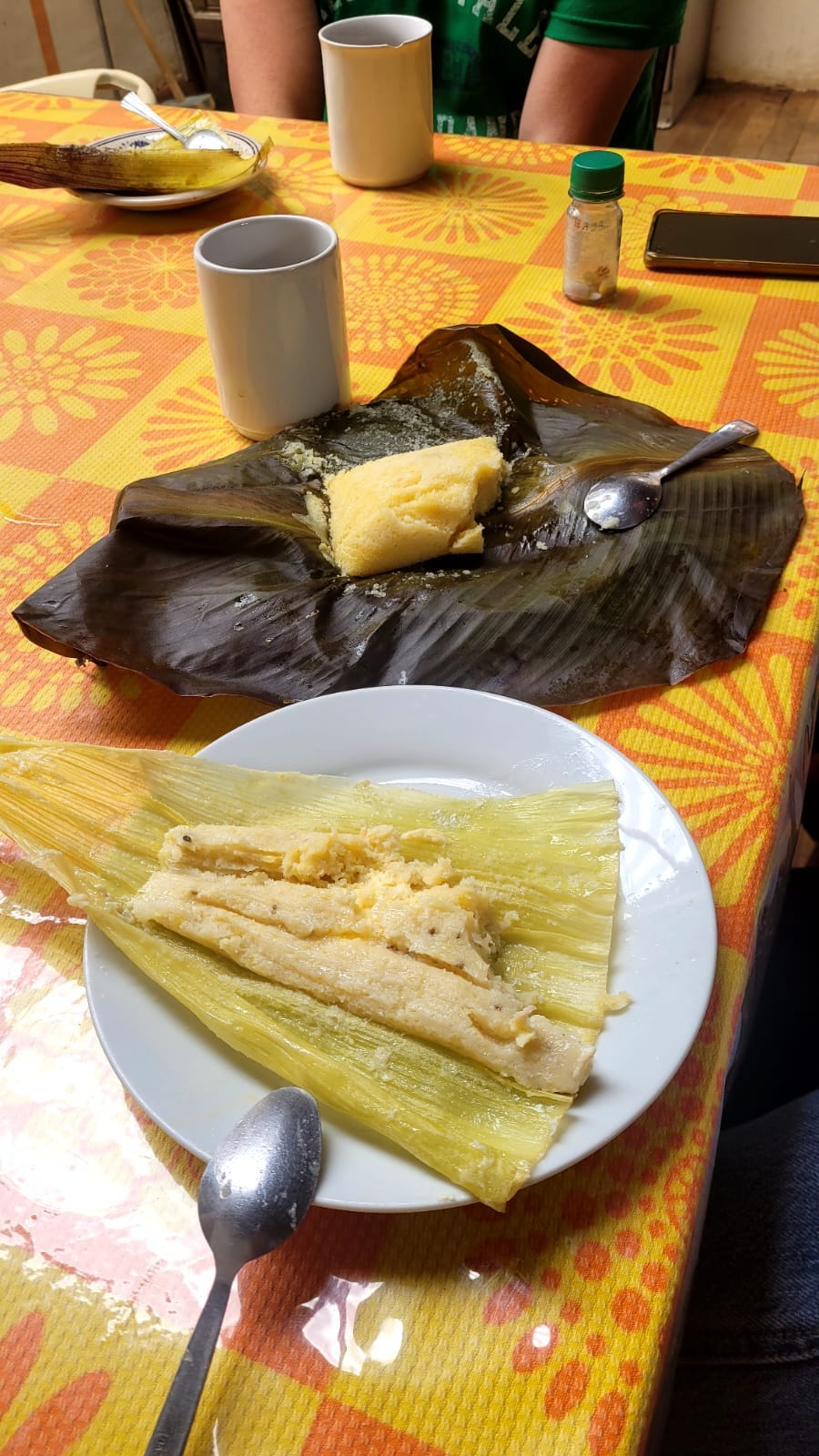

Yum! Apart from tripe that I don’t think my mind will ever convince itself to like!
I've eaten Ecuadorian ceviche a few times, and for me it beats the Peruvian version hands down. Surprised it isn't more well known too.